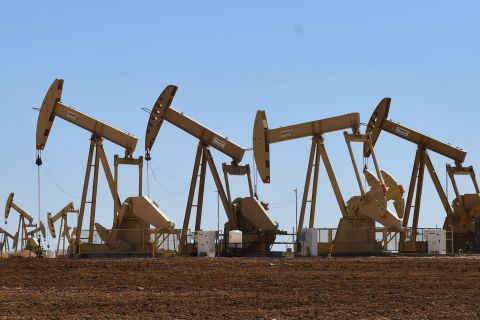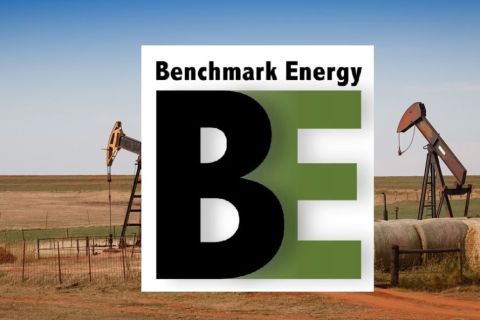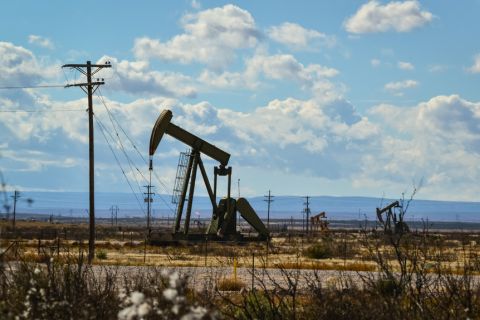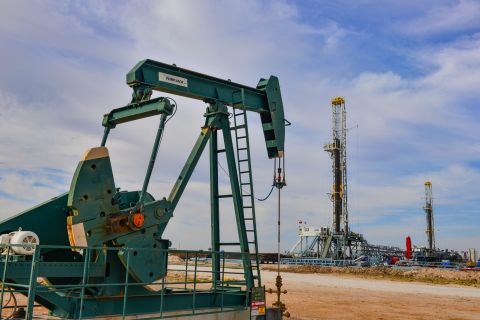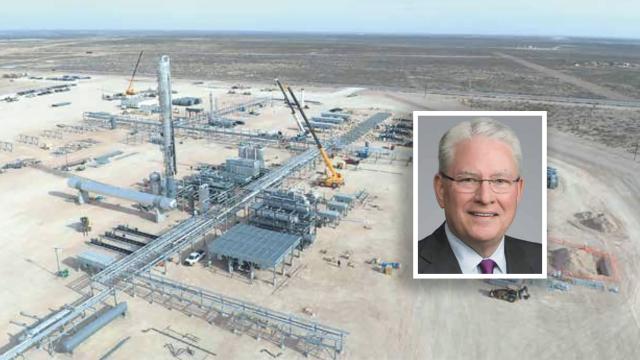
Crestwood's 200-million-cubic-feet-per-day Orla plant in Reeves County, Texas, went online in 2018, serving the Delaware Basin. (Source: Crestwood Equity Partners LP)
An Alerian co-founder, board member and the former president and CEO, Kenny Feng has led insightful interviews in the podcast series “Energy Titans” with successful energy industry senior executives. One of Feng’s recent conversations was with Crestwood Equity Partners LP chairman, president and CEO Robert G. “Bob” Phillips, a 42-year industry veteran. Crestwood ranks No. 30 on this year’s Midstream 50 list of the sector’s largest publicly held firms.
Phillips discussed several important topics, but took time in particular to discuss what Crestwood management did to weather the industry downturn that began in late 2014. He related its plan closely to what midstream operators must do as industry veterans, like him, prepare to pass leadership to a new generation in the near future. —Paul Hart
FENG: Please talk a little bit about the origin of Crestwood.
PHILLIPS: Crestwood is truly a dream come true for me. It’s the culmination of everything I have learned over my 42-year career. I go back to starting as a young man with Gulf Oil Co. as a gas-contracts representative—administrating contracts, learning the business from the ground up from a major’s perspective. Then later, I moved on to Tenneco [Inc.] Finally, I was with a small independent company, long since gone but very famous back then, Tejas.
FENG: You’ve been through a lot of business cycles. How did you prepare your team for the cycle we’ve just been through?
PHILLIPS: We got to the big downturn in 2015, and, like everyone in the business, we recognized we had too much leverage. We were under-covered from a distribution standpoint. Our corporate structure was too complicated. We had IDRs [incentive distribution rights].
While we were early in the cycle, it was clear to me that investors were not going to like IDRs when growth stopped. We set out a strategy to try to fix what we thought were the problems that we were going to face over the next several years.
I remember specifically telling the team in the spring of 2015 that we need to get ready for lower and longer. “This is probably going to be a four- or five-year cycle. We’ve got to reduce costs. We’ve got to create more efficiencies in our organization. We’ve got to simplify our structure. We’ve got to right-size our distribution. We’ve got to pay down a significant amount of debt and get our balance sheet in good shape.
“If we can do all that, we’ll be more competitive than anybody else. If we can be more competitive, then, when this market starts to turn back around, we’ll be in great shape.”
That’s exactly what we did in 2015 and 2016. We merged our general partner and limited partner together. We simplified our structure and we eliminated the IDRs. We paid down 40% of our debt—about $1.3 billion in 2016—through divestitures. We formed strategic joint ventures in all of the high-growth basins because we knew that—when prices improved and producers went back to drilling—we were going to have some significant capital-investment opportunities. We wanted to have partners to be able to help us with those projects.
FENG: Talk a little bit about that conversation that you had in 2015 with your team. How did you share your foresight—not necessarily from a timing perspective but from a “this is what’s going to happen” perspective? What elements of your work history—your leadership—gave you the ability to see that?
PHILLIPS: Well, that’s exactly where my 42 years in the business came to provide a benefit—not only my requirements as a CEO to provide good leadership, but also to have a vision to lead the company.
All of the cycles I’ve been through, whether they were up or down, required a recognition of where you were in a cycle. Then, you had to make a commitment to either upsizing or downsizing your organization—your competitive footprint.
You have to make sure you have the right balance sheet to be competitive and aggressive in the regions that you operate in. Having experienced all these cycles over the years, when I looked at the fundamentals, this helped as lower prices set in in late 2014 and through 2015.
There inevitably had to be a slowdown in drilling activity. We knew that we needed to get ready for a three- or four-year downturn. Now, as it actually turned out, it was more of a V-shaped recovery than U-shaped. The companies that took it seriously, that cut their costs, that improved their efficiency, then reorganized themselves, were ready for a lower-for-longer environment.
Those were the ones that were more ready for the recovery when it happened. I think Crestwood was one of those.
I brought in my people in early 2015 and I said, “We are about to enter a cycle that you guys haven’t seen before, but I’ve seen it a number of times. We’re going to have an internal project to respond.”
We called it Project Adapt—and this was just a year from our Inergy Midstream LP merger. We were actually still growing on a run-rate basis at the time. We were going to get the organization ready for three or four years of low prices, low activity. It started first with fixing the balance sheet and then it went to fixing the organization.
Then, frankly, it went to rebranding the organization around customer service—because you and I know that, in these tough, challenging markets, the only real differentiator is the level of customer service that you show.
I think we did a good job of turning the company around. We were rewarded for that in 2017 and 2018 with a better-performing unit price than most. Crestwood had better overall valuations than a lot of our peers, some of whom were significantly larger than us.
They just simply didn’t move as quickly. Or, they didn’t reorganize as deeply and permanently as they should have.
FENG: As a CEO leading an organization going into tough times, from a macro-perspective and having to adapt, how do you sell that? How do you sell that internally to your team?
PHILLIPS: Well, you raise an interesting question. Another way to ask that is “How do you manage millennials in a downturn?” Let me tell you, the old answer of “just trust me” doesn’t work with this generation.
We spend a lot of time on the front end of our organizational assessment in trying to plan out what our activity level will be over the next several years at certain commodity prices. Where are we going to grow? Where were we going to shrink? Which assets could we effectively consider core? Which assets would be non-core?
Ultimately, the non-core assets would be divested, even though it’s not really an accepted practice to sell an asset in a downturn because it’s like catching a falling knife. You can never sell it for enough value to redeploy the capital.
In this case, it was about selling assets and paying down debt—as opposed to capital redeployment. Not only were investors wanting that to happen, but, eventually, they were demanding that it would happen. It always surprised me that our entire industry hasn’t reacted as quickly as we did at Crestwood to sell assets and deleverage balance sheets.
I think, as an industry, we’re still suffering a little bit from that today. Guys are just now simplifying their structures, reducing their leverage and improving coverage.
It was the right thing to do to take care of all of our constituents. We have our shareholders to think about. We have our employees to think about. We have our business partners to think about. We have our vendors. Finally, we have the communities that we live in to think about. These are all important constituents or stakeholders in our business.
We have not only a fiduciary duty, but we have a real duty to think hard about how to remake or reposition the company so that it cannot only survive, but, then, when the recovery starts, be in a good position actually to take advantage. We can get back a lot of value that we lost on the downturn.
It wasn’t just about cutting costs. We didn’t go “every other guy needs to leave” or “I’m going to give you a mandate and tell you that you need to cut $20 million a year out of your budget.”
What we did was we broke the company down into eight different groups. We created steering committees for each group. I made them do their own self-assessment about what they needed and what they didn’t at certain levels of activity. Then they came back to me with recommendations: We need to cut this, we need to keep this, we need to consolidate this, we need to do this better. Over a 90-day period, we created a plan.
Then I said, “I think that’s a great idea. Let’s go do that.”
What I have found over the years, particularly in being a mentor to a lot of really young executives, is it’s not only better if they think it’s their idea, but if they can build ownership in it and realize that we’re doing it not from top down but from bottom up. It always works out better that way. It was very much a bottoms-up process.
Dozens of people were on the steering committees. Hundreds of people were involved. When we got to the end of Project Adapt, everyone took ownership. They were proud of what we’d done.
I’m proud that, more than three years later, they know they did the right thing. It’s a great lesson for them to learn in their careers, I have a lot of young people working for me. They’re going to have very long careers. I’m not going to be around next time to say, “Hey, guys I’ve seen this movie before, we need to start cutting.” It was all about what to do after we had years of acquisition and growth, and integration and growth.
FENG: Let's talk a little bit more about mentorship, or advice, for somebody who’s just been tapped for the CEO job. You have decades of experience as a CEO, founder, chairman, and president. What are the core elements of how you think about what it means to be the chief executive in a company? What are the responsibilities of it? How do you grow into that role over time?
PHILLIPS: I think I’m particularly well-suited to discuss this topic. I’ve been a public-company CEO since 1987. I was 32 years old when I did my first IPO.
I’ve learned a lot over the years. I’ve had the benefit of working around some really good CEOs that have mentored me.
My No. 1 lesson for anyone taking over the top job is you have to lead by example. You really do. There’s a lot of leadership advice out there about how to be a great leader. One guy may feel comfortable being a Jack Welch and another guy may feel comfortable being a Boone Pickens. There are all different types of leaders. You have to be your kind of leader, but you always have to lead by example.
The one thing I know for certain is every day when you walk in, they’re all watching you. If you walk in in a bad mood, they are going to be in a bad mood. If you walk in optimistic, they’re going to be optimistic: Lead by example.
One of my favorite sayings is “Before I was a leader, it was all about me. Now that I’m a leader, it’s all about them.” It really is about building not only the next generation of leaders, but building your organization around you and recognizing that no one CEO can do everything.
A CEO has to build a good team. He has to have trust in a team. He has to turn the business over to the team. They’ve got to learn to make their own decisions. Sometimes they have to make their own mistakes to really learn those lessons well. I’d like to think that my best quality as a CEO is leading by example, setting a good tone at the top, setting the priorities the way they should be set.
In the 42 years that I’ve been in the business, environmental, health, safety and compliance have always been a priority—with safety, of course, being the top priority.
Every company that I’ve ever run has had an oversized commitment to the environment, to the safety of our employees, our business partners, the public and to regulatory compliance. That’s because, really, I believe this is the future of our industry.
As an industry, we are an infrastructure play. To continue to build more infrastructure, we have to embrace the operating principles that regulators would like. We have an operating license and we have to continue to earn that operating license. We do that by operating with a small footprint and being committed to the environment, to people, to good policy and procedure, and good practice. That’s always been the top priority.
FENG: Can you talk about the different macro-environments? Given your skill set, given what you believe you are best at doing, is there a particular business environment or stage in the life of a company that you feel, A, you enjoy the most and, then, B, you feel you are best at dealing with?
PHILLIPS: I think it’s one and the same. I enjoy building a company; I think I’m pretty good at building a company. I’ve always been challenged with selling; I’m not a natural seller.
While I have a private-equity partner in First Reserve [Corp.] and they’ve been a fabulous partner, I think we broke the mold on the traditional private-equity formula: “I’ll give you two years, two counties in West Texas and $200 million. Go see if you can build something and we’ll sell it to the next guy.”
That was never our model from Day One. It was to build a sustainable company that played an important role in the business, while at the same time understanding that we have a fiduciary responsibility to our stakeholders and investors to create value. If somebody comes along someday and wants to own it, then they can have it at the right price. That’s the bargain—or the contract—that we make as a public company.
This is not my company. This company belongs to the investors. While it may have my name on it and while I may have been the only guy there at the beginning, it is very much a company that is built for our shareholders to create value.
FENG: How does one assess, from the operator perspective, what the right relationship is on the financing side?
PHILLIPS: That’s an easy one. It’s not necessarily the guy that will write you the biggest check. It’s absolutely not the guy that you think has the lowest cost of capital. It is the guy that you have the best relationship with, that you feel comfortable with. Because, when you join forces with a private-equity partner, you really are getting married for some period of time.
The longer the better, but inevitably there will be a time period in which you have great alignment of interest, you’re pulling the wagon the same way. It’s just like commercial bankers: You really need someone you can trust, somebody that sees the world the same way that you do, has the same sense for return on invested capital, the same objectives about how to manage the capitalization of the business.
There is the old private-equity model, where you put as much debt on the business as you possibly can. That increased the returns and made everybody look better when the private-equity guy sold out his interest; he’d have a higher return on investment.
That model doesn’t really work anymore. While there’s still plenty of leverage to put on businesses, there’s a lot more real equity going into the business.
FENG: You had talked a little bit about the different stakeholders of the company, including the community. I see there are, obviously, a lot of demands on your time. You have an open-door policy. At the same time, if everybody came to your door at once, you have a limitation. How do you decide what is not a good use of time?
PHILLIPS: Well, I still have my primary responsibility to our investors to make sure that the company is operating appropriately, that we're putting out good guidance and, then, delivering on that guidance, that we’ve steered the ship the right direction—given the constantly changing market conditions, regulatory challenges and capital-market challenges.
I think we do that pretty effectively as an executive team. We have six executives that form Crestwood’s executive committee.
I have long since realized that it’s a lot better if we all collaborate on important business decisions, instead of Bob telling them this is what we’re going to do next. We get better ownership that way and it’s a much more thorough underwriting process that we go through to make important investment decisions. I spend a fair amount of time with the board and with the executive committee.
I’ve reached a point in my career where I feel good about leaving the day-to-day affairs of the business to the next level down. It’s now their turn to learn how to run a business on a day-to-day basis. I feel very comfortable with that. I think they feel very comfortable in assuming those responsibilities. That leaves me a fair amount of time to think about what are the broader issues.
At the beginning of last year, we formed our Crestwood theme, which is “communication, collaboration and customer service.” That communication is between our internal Crestwood groups, and Crestwood and its customers. Our collaboration is with our internal groups, and Crestwood and our business partners. Customer service is the differentiator in tough, competitive, challenging markets. We’ve seen the benefit of that at Crestwood over the last couple years.
Our theme for 2019 is environment, health and safety, and sustainability. We intend to be the midstream leader in this area and have already had an opportunity to make several industry speeches or speak to groups, both downstream as well as upstream, and to trade associations. For example, there was the recent meeting where I was collaborating with other CEOs to try and impress upon them the importance that now is the time to do all this.
I’m in a period in my career and in my life where mentorship is really important to me. I have a number of mentees in the Crestwood organization. I’m also mentoring individuals outside of the company and in other businesses.
I really feel that’s me giving back for the years of experience I’ve had. Then finally, there’s community engagement. I do that both on behalf of Crestwood as well as our own personal Phillips Family Foundation and the things that we like to contribute to.
I have a very full plate. I’m always spending time thinking about what’s the next big chess move that we need to make to continue to position Crestwood in the right spot.
Recommended Reading
Enverus: 1Q Upstream Deals Hit $51B, but Consolidation is Slowing
2024-04-23 - Oil and gas dealmaking continued at a high clip in the first quarter, especially in the Permian Basin. But a thinning list of potential takeout targets, and an invigorated Federal Trade Commission, are chilling the red-hot M&A market.
Life on the Edge: Surge of Activity Ignites the Northern Midland Basin
2024-04-03 - Once a company with low outside expectations, Surge Energy is now a premier private producer in one of the world’s top shale plays.
Benchmark Closes Anadarko Deal, Hunts for More M&A
2024-04-17 - Benchmark Energy II closed a $145 million acquisition of western Anadarko Basin assets—and the company is hunting for more low-decline, mature assets to acquire.
Novo II Reloads, Aims for Delaware Deals After $1.5B Exit Last Year
2024-04-24 - After Novo I sold its Delaware Basin position for $1.5 billion last year, Novo Oil & Gas II is reloading with EnCap backing and aiming for more Delaware deals.
Mighty Midland Still Beckons Dealmakers
2024-04-05 - The Midland Basin is the center of U.S. oil drilling activity. But only those with the biggest balance sheets can afford to buy in the basin's core, following a historic consolidation trend.


